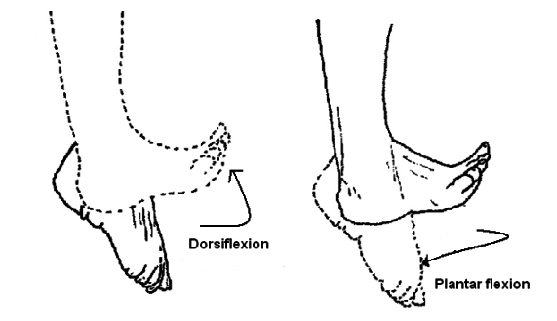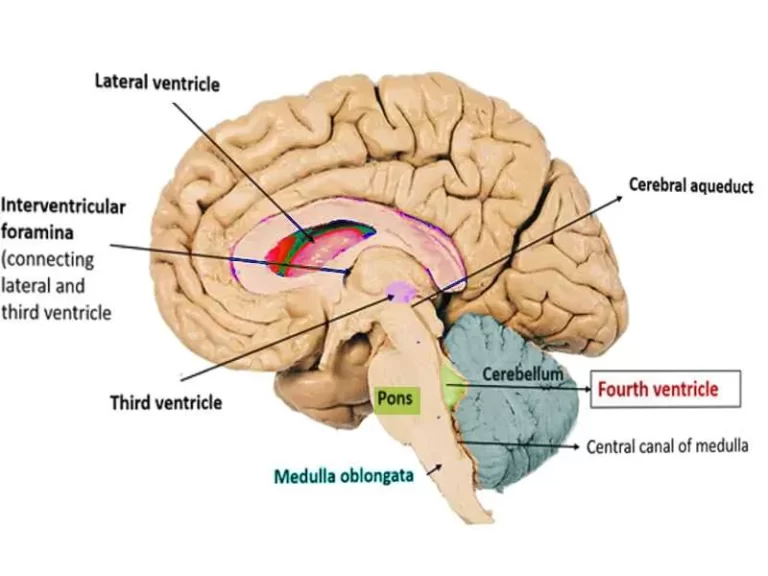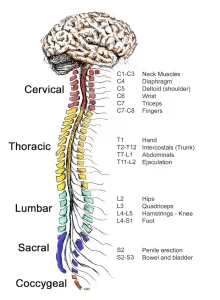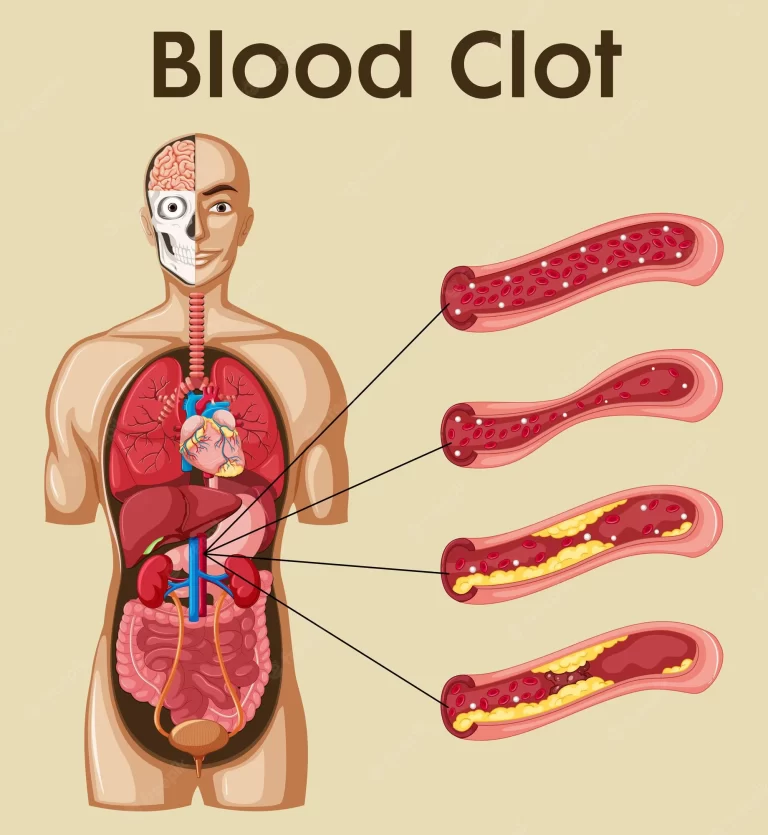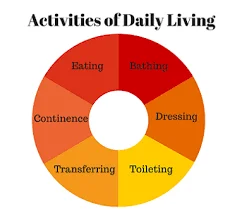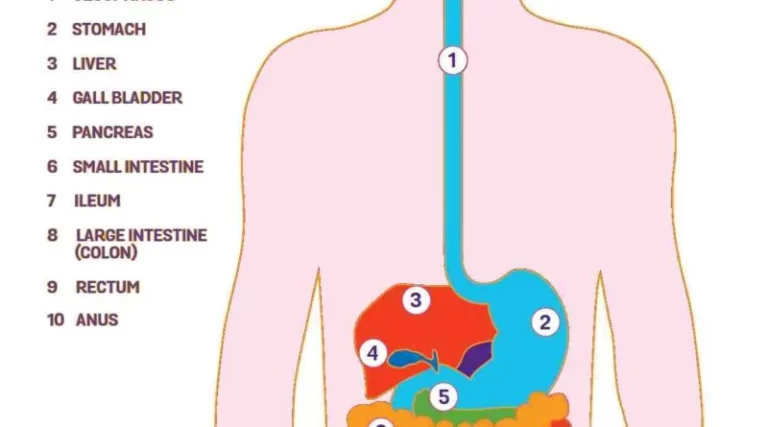EQUILIBRIUM
INTRODUCTION :
equilibrium, state of balance. When a body or a system is in equilibrium, there is no net tendency to change. In mechanics, equilibrium has to do with the forces acting on a body. When no force is acting to make a body move in a line, the body is in translational equilibrium; when no force is acting to make the body turn, the body is in rotational equilibrium.
A body in equilibrium at rest is said to be in static equilibrium. However, a state of equilibrium does not mean that no forces act on the body, but only that the forces are balanced. For example, when a lever is being used to hold up a raised object, forces are being exerted downward on each end of the lever and upward on its fulcrum, but the upward and downward forces balance to maintain translational equilibrium, and the clockwise and counterclockwise moments of the forces on either end balance to maintain rotational equilibrium. The stability of a body is a measure of its ability to return to a position of equilibrium after being disturbed.
It depends on the shape of the body and the location of its center of gravity (see center of mass ). A body with a large flat base and a low center of gravity will be very stable, returning quickly to its position of equilibrium after being tipped. However, a body with a small base and high center of gravity will tend to topple if tipped and is thus less stable than the first body.
A body balanced precariously on a point is in unstable equilibrium. Some bodies, such as a ball or a cone lying on its side, do not return to their original position of equilibrium when pushed, assuming instead a new position of equilibrium; these are said to be in neutral equilibrium. In thermodynamics , two bodies placed in contact with each other are said to be in thermal equilibrium when, after a sufficient length of time, their temperatures are equal. Chemical equilibrium refers to reversible chemical reactions in which the reactions involved are occurring in opposite directions at equal rates, so that no net change is observed.
DEFINATION:
equilibrium has to do with the forces acting on a body. When no force is acting to make a body move in a line, the body is in translational equilibrium; when no force is acting to make the body turn, the body is in rotational equilibrium. A body in equilibrium at rest is said to be in static equilibrium.
The word equilibrium is derived from the Latin word aequilibrium which means equal balance. Its use in economics is imported from physics. In physics it means a state of even balance in which opposing forces or tendencies neutralize each other. Prof. Stigler defines equilibrium in his sense in these words:” equilibrium is a position from which there is no net tendency to move, we say net tendency to emphasize the fact that it is not necessarily a state at sudden inertia but may instead represent the cancellation of power forces. In economics, equilibrium implies a position of rest characterized by absence of change.
If we have to define equilibrium the most simple definition would be it is a point where the net external force, as well as torque acting on the body about COM or any other point, is zero. But to be more specific for a rigid body equilibrium means both rotational as well as translational equilibrium. For example, consider the following situation:
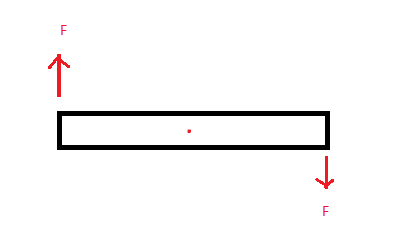
Table of Contents
CHARACTERISTICS OF EQUILIBRIUM
A system is said to be in stable equilibrium if, when displaced from equilibrium, it experiences a net force or torque in a direction opposite to the direction of the displacement. For example, a marble at the bottom of a bowl will experience a restoring force when displaced from its equilibrium position.
In this case, the body is in translational equilibrium but the two forces form a couple hence it is not in rotational equilibrium. So suppose for a rod kept on a table minimum number coplanar forces (having a different line of actions) that must act so that body remains in equilibrium? So if we analyze with one force it can’t be either translational or rotational equilibrium, with two force translational is possible but not rotational but with three we can achieve both.
Equilibrium is classified as Dynamic or Static equilibrium. The next question is what static equilibrium is and how it is different from dynamic? So if the body is in equilibrium but continues to move with uniform velocity it is known as dynamic equilibrium. For example, a ball moving with uniform velocity. On the other hand, if the body is in equilibrium while being at rest it is termed as static equilibrium.
Equilibrium is also classified as stable, unstable and neutral. A stable equilibrium is one in which if the body is displaced from its equilibrium position then it tends to move towards that equilibrium point. For example, a ball kept at the bottom of a hemisphere. While in case of unstable equilibrium, if it is displaced from that point the body tends to move away from that point. Consider a ball kept at the top of a sphere. If we slide it, the ball tends to roll away from the topmost point. Similarly, in neutral equilibrium, the body neither moves towards nor away from the equilibrium point. For example, displace a ball kept on a horizontal surface slightly.
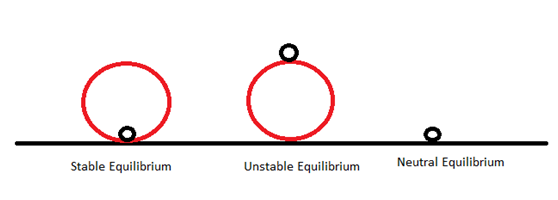
PHYSIOLOGY OF EQUILIBRIUM
1) What part of the brain controls balance and equilibrium?
The cerebellum, in the back of the brain, controls balance, coordination and fine muscle control (e.g., walking). It also functions to maintain posture and equilibrium.
2) What part of the brain controls the vestibular system?
While one part of the inner ear enables hearing, another part, called the vestibular system, is designed to send information about the position of the head to the brain’s movement control centre, the cerebellum.
3) How does the vestibular apparatus work?
The vestibular system is a sensory system that is responsible for providing our brain with information about motion, head position, and spatial orientation; it also is involved with motor functions that allow us to keep our balance, stabilize our head and body during movement, and maintain posture.
4) the role of the vestibular apparatus in maintaining balance.
The vestibular system is a sensory system that is responsible for providing our brain with information about motion, head position, and spatial orientation; it also is involved with motor functions that allow us to keep our balance, stabilize our head and body during movement, and maintain posture.
5) How is equilibrium maintained?
The saccule and utricle contain receptors that help maintain equilibrium. Equilibrium is maintained in response to two kinds of motion: Static equilibrium maintains the position of the head in response to linear movements of the body, such as starting to walk or stopping
CAUSES :
Causes of balance problems include:
1)infections of your ear
2)inner ear problems
3)head injury
4)poor blood circulation
5)certain medications
6)chemical imbalance in your brain
7)low blood pressure
8)high blood pressure
9)neurological conditions
10)osteoarthritis
11)aging
For example:
- Vertigo causes dizziness when you move your head. The symptoms usually occur when you look behind you or look up to reach for an item positioned above your head.
- Inner ear infection or inflammation can make you feel dizzy and unsteady. The flu or an upper respiratory infection can cause this condition.
- Meniere’s disease changes the volume of fluid in your ear, causing balance problems, hearing loss, and ringing in your ears. Its cause is unknown.
- Head injury, strenuous physical activity, ear infections, and atmospheric pressure changes can cause inner ear fluid to leak into your middle ear. This can cause balance problems.
- Sea travel can cause balance problems that may take hours, days, or months to clear up.
- A tumor, such as an acoustic neuroma, can also cause balance problems
FACTORS AFFECTING EQUILIBRIUM
- stability is directly proportional to the area of the base on which the body rests. Stability depend upon area of the base. Is the base increases, the stability increases and
vice-versa.
e.g. a. a person standing on toes has – very less degree of stability unstable. b. both feet together – little more. c. both feet apart – further more. d. the person with both hands and feet on the ground
(four point football stance) – much more. e. wrestler’s defensive down position – still more. f. a person lying on the floor with the arms and feet spread- very high. - stability is indirectly proportional to the distance of the center of gravity of the body above the base. As the height of the center of gravity (C.G) increases the stability decreases and vice- versa. The centre of gravity of a body is the point from which the body can have perfect balance It can be considered as the centre of weight of the body.
Normally in an adult man the C.G. in a standing position will be at 56.18 % of the height from the ground. and it will be at 55.14 % in adult women.
e.g.; (If standing person raises his hands upwards, the C.G. will move high and stability decreases) - for equilibrium to exist the center of gravity must fall within its base. The stability will be more when the C.G. falls within the base of the body, or object a gymnast in performing the hand stand should keep his body vertical so that C.G. falls between his hands and has more stability e.g.; (in the low crouch inbasketball dribbling the C.G. drops within the base it creates wider base and closer to the ground. hence, the stability will be more)
- stability is directly proportional to the horizontal distance of the centre of gravity to the edge of the base in a given direction of movement
- stability is directly proportional to the weight of the base. e.g.; (the heavy body will have more stability)
If two individuals of different weights are standing,
it is difficult to more the equilibrium of heavier person.
Type of equilibrium
all objects rest are in equilibrium. That means all the forces acting of them are equally balanced. and sum of all the forces and of all torques equal zero..
But all the objects are not equally stable
The following are the types of equilibrium;-

a. stable equilibrium
If the person of an object is slightly altered and the object tends to return to its original position, the object is said in stable equilibrium
(Fig. A)
b. unstable equilibrium
It exists when it requires only a slight push to disturb the equilibrium. (Fig. B).
c. neutral equilibrium
The object is said to be in neutral equilibrium when it is disturbed without either raising or lowering the centre of gravity.
(Fig. C).
RISK FACTORS
risk of balance problems?
1)You may be at risk of balance problems if you’re on medication, have a viral infection, experiencing inner ear problems, or recovering from a head injury.
2)If you’re age 65 or older and have arthritis, or high or low blood pressure, your risk of balance problems is higher.
3)Traveling on a boat or ship may also cause temporary balance problems
Guiding principles ( degree) of equilibrium
Following are the guiding derived from the factor of equilibrium
1)to start quickly in one direction, keep the C.G. as high as possible and as near as possible to the edge of the base in the direction of movement.
E.g. Set position in sprints and swimming.
2)a body is said be in equilibrium when is C.G. falls within its base and loses its equilibrium when the C.G. falls outside its base.
E.g. wrestler’s lying position and dribble low in basketball.
3)to stop quickly during rapid motion, drop the C.G. as low as possible, create greater area of base as possible and move the C.G. away from the edge of base nearest to the direction of movement.
E.g. sudden stop of moving basketball player.
4)in all arm support activities the C.G. of the body should be as near as possible ove point of support.
E.g. vaulting horse and exercises on bar.
5)when the body is free of support and the air the movement are not affected by the height of C.G., but the C.G. within the body can be changed by the body movement.
E.g. sergeant jump.
6)when the body is free in the air, and head and feet move down, the hips move up and vice-versa. Principle of end and middle is involved.
E.g. crossing the hurdle.
7)when either hands or feet and supported, if one moves up, the hips move down and vice versa.
E.g. crossing the bar in pole-vault.
HOW TO DIAGNOSE?
Balance problems are difficult to address because they may be caused by numerous factors. Your doctor may ask about your symptoms and review your medical history for related conditions and medications.
In some cases, you may be referred to an ear, nose, and throat specialist. They may run the following tests to pinpoint the cause and intensity of the problem:
1)blood tests
2)hearing exams
3)eye movement tests
4)imaging scans of your brain and head, such as an MRI or CT scan
posturography, which is a study of your posture
CO-ORDINATION TEST
NON- EQUILIBRIUM TEST
Examples of Coordination Tests in the Upper Limb
In the following tests, you will be looking for signs of Intention tremors and Decomposition of movements or Dysmetria: in the form of hypermetria or hypometria
1)Finger-to-nose test – The shoulder is abducted to 90o with the elbow extended, the patient is asked to bring tip of the index finger to the tip of nose.
2)Finger to therapist finger: the patient and the therapist site opposite to each other, the therapist index finger is held in front of the patient, the patient is asked to touch the tip of the index finger to the therapist index finger.
3)Finger-to-finger test – Both shoulders are abducted to bring both the elbow extended, the patient is asked to bring both the hand toward the midline and approximate the index finger from opposing hand
4)Finger-to-doctor’s finger test – the patient alternately touch the tip of the nose and the tip of the therapist’s finger with the index finger.
5)Adiadokokinesia or dysdiadokokinesia – The patient asked to do rapidly alternating movement e.g. forearm supination and pronation, hand tapping.
6)Rebound phenomena – The patient with his elbow fixed, flex it against resistance. When the resistance is suddenly released the patient’s forearm flies upward and may hit his face or shoulder.
7)Buttoning and unbuttoning test.
Examples of Coordination Tests in the Lower Limb
1)Walking along a straight line. Foot close to foot:In case of cerebellar lesion, there is deviation of gait
Coordination Tests for Athletes / Everyday Sports Person
Many high level tests also exist to help assess and improve an athletes skills and performance e.g. Stick Flip Coordination Test; Wall-Toss Test; Block Transfer; Soda Pop Test; Plate Tapping; Light Board; Test Heel-to-knee test.
2)Rom-berg test: Ask the patient to stand with heels together. Swaying or loss of balance occurs while his eyes are open or closed.
EQUILIBRIUM TEST
1)Standing, comfortable posture with normal base of support (BOS).
2)Standing, feet together (narrow BOS).
3)Standing in tandem position, with one foot directly in front of the other (toe of one foot touching heel of opposite foot)
4)Standing on one foot.
5)Arm position may be altered in each of the above postures (i.e., arms at side, over head, hands on waist, and so forth).
6)Perturbations: displace balance unexpectedly
7)Standing, functional reach: forward trunk flexion with upper extremity reach.
8)Standing, laterally flex trunk to each side
9)Standing: eyes open (EO) to eyes closed (EC); inability to maintain an upright posture without visual input is referred to as a positive Romberg sign.
10)Standing in tandem position eyes open (EO) to eyes closed (EC) (Sharpened Romberg).
11)Tandem walking, placing the heel of one foot directly in front of the toe of the opposite foot.
12)Walking along a straight line drawn or taped to the floor, or place feet on floor markers while walking.
13)Walk sideways, backward, or cross-stepping.
14)March in place.
15)Alter speed of ambulatory activities; observe patient walking at normal speed, as fast as possible, and as slow as possible.
16)Stop and start abruptly on command while walking.
17)Walk and pivot on command (turn 90, 180 or 360 degrees)
18)Walk in a circle, alternate directions.
19)Walk on heels or toes.
20)Walk with horizontal and vertical head turns on command.
21)Step over or around obstacles
22)Stairclimbing with and without using handrail; one step at a time, step over step.
23)Jumping jacks.
24)Sitting on therapy ball: alternate flexing and extending the knees (coordinated movement with upright balance).
MANAGEMENT
What can be done for vestibular disorders?
In addition to being treated for any underlying disease that may be
1)contributing to the balance disorder, treatment can include:
2)Vestibular rehabilitation therapy (VRT) …
3) Canalith repositioning maneuvers (e.g., the Epley maneuver) …
4) Home-based exercise. …
5) Dietary adjustments. …
6) Talk therapy—counseling. …
7) Medication. …
8) Surgery.
1)Medications
Your doctor will review your medications. They might replace them or adjust your dosage. If your condition is caused by a bacterial ear infection, your doctor might prescribe an antibiotic to cure it.
If you have symptoms of nausea, they may prescribe antinausea medication. Your doctor might also inject small doses of corticosteroids behind your eardrum to decrease dizziness.
2) Surgery
If you have Meniere’s disease, your doctor may recommend surgery on your vestibular system, which makes up your inner ear and affects your balance.
3) Home care
To relieve vertigo, your doctor may prescribe activities that can be done at home or with the help of a rehabilitation therapist.
A common technique that can be performed at home is the Epley maneuver.
It involves sitting up and then quickly resting on your back and turning your head to one side. After a couple of minutes, you sit back up. Your doctor will probably show you this technique in their office. You can repeat it at home to reduce or eliminate dizziness.
If the cause of your balance problem is unknown or incurable, your doctor might instruct you on various ways to reduce your risk of injury. You may require assistance when using the restroom or climbing stairs. Using a cane or handrails at home may also be necessary.
It’s generally best to avoid driving if your condition is severe.
Your doctor might also make recommendations to address your overall health. These might include:
4) physiotherapy treatment
5)quitting smoking, if you smoke
6)limiting caffeine and alcohol
7)reducing your salt intake
8)eating well-balanced meals
Outlook
Balance problems can be temporary or a long-term issue, depending on what causes them.
If you have an ear infection or have just traveled on a boat, the condition generally clears up in time with treatment. However, if the cause is unknown or the issues are a result of chronic conditions or aging, the symptoms may continue indefinitely.
Speak with your doctor to learn more about your condition and outlook
Prevention
Most balance problems are difficult to prevent. However, you can address those that are associated with blood pressure issues.
Prevent low blood pressure by drinking more water and avoiding alcohol. Avoid high blood pressure by exercising regularly, limiting your salt intake, and maintaining a healthy weight.


